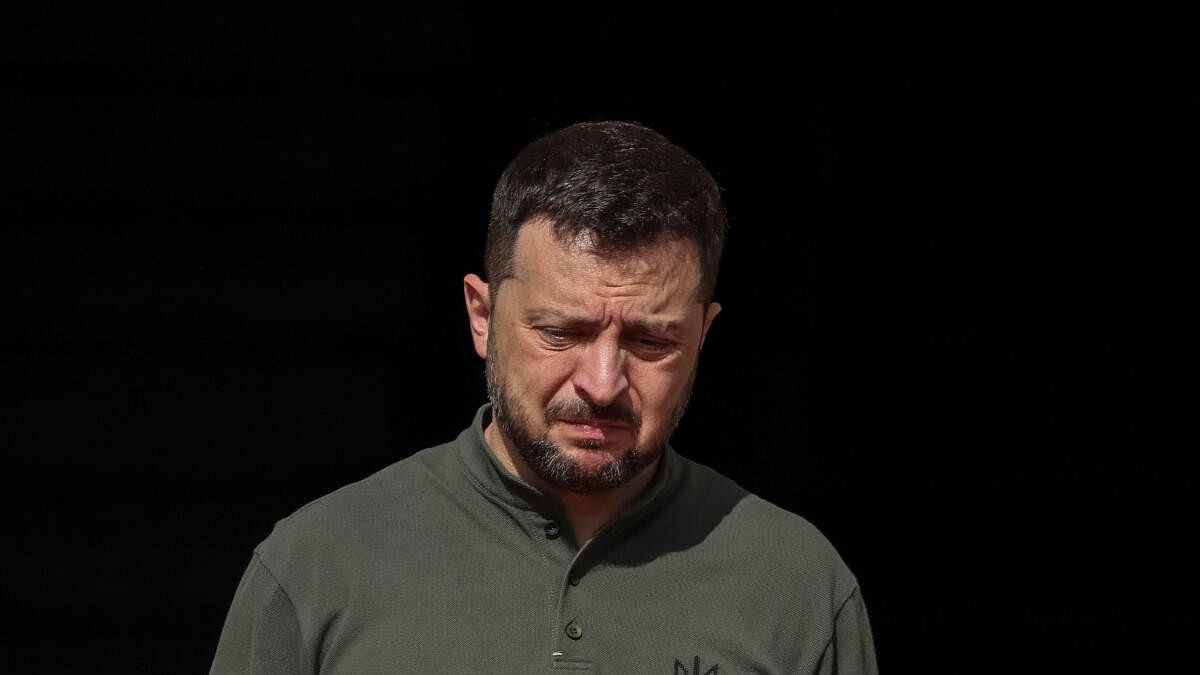
Ukraine's President Zelenskyy
Credit: Reuters photo
The unfortunate war in Ukraine has been going on for the last two and a half years. The conflict stems from President Putin’s twin objectives: extending Russia’s imperialist hold over Ukraine and preventing NATO’s encirclement of Russia, given Ukraine’s aspiration to join the alliance. The conflict has persisted largely because of the West’s, primarily the United States’, massive military assistance to Ukraine and the continued policy of containment, first aimed at the Soviet Union during the Cold War era and now at Russia. This proxy war between Russia and the West has led to massive deaths and destruction.
This article aims to analyse the peace initiatives since the war’s outbreak. The first such meeting was held in Belarus on February 28, 2022, just four days after the Russian invasion. As expected, the meeting was inconclusive, with both Russian and Ukrainian delegations returning to their capitals for further instructions. The second, third, fourth, and fifth rounds of consultations took place in March 2022 in Turkey, leading to the Istanbul Communiqué. The communiqué outlined provisions for Ukraine’s security guarantees, including declaring Ukraine a neutral State, limiting its military, and involving Russia and Western countries, including the UK and US, as guarantors of a ceasefire agreement as a prelude to peace. However, the talks failed primarily due to the American strategy of teaching Russia a lesson militarily.
The next significant peace initiative was in November 2022 at the G20 Summit, where President Zelenskyy presented his “10 Points Peace Proposal” to end the war. Key features of the proposal included the withdrawal of Russian forces, the return of deported persons, the prosecution of war crimes against Russia, and reparations by Russia as conditions for signing a peace treaty. Russia perceived the plan as hostile and refrained from supporting its key aspects. Several international conclaves followed in 2023, notably two meetings in Copenhagen and another in Jeddah, with 40 nations participating, but all in vain.
Subsequently, China proposed a comprehensive peace plan featuring principles such as respecting sovereignty under the UN Charter, ceasing hostilities, resuming peace talks, resolving the humanitarian crisis, protecting civilians and prisoners of war, ensuring nuclear power plant safety, facilitating grain exports, halting unilateral sanctions, and promoting post-conflict reconstruction. However, the US viewed the proposal as one-sided, and the Chinese peace plan became a non-starter.
The most recent Western-sponsored effort to end the war in Ukraine took place in Switzerland on June 15–16, 2024, formally designated as the ‘Summit on Peace in Ukraine.’ Ninety-two nations and eight international organisations participated, though Russia was conspicuously absent. The Joint Communiqué stressed the need for agreement on three themes: the safety of nuclear power stations and weapons, food security, and the exchange of prisoners and deportees. It also called for the cessation of attacks on merchant ships along the entire route, uninterrupted supply of Ukrainian food grains to third countries, and the release of children and civilians held by Russia.
While these efforts to mitigate the war’s disastrous consequences are welcome, it is distressing that the war has intensified as a result of Ukraine’s recent assault on Russia’s Kursk region. President Zelenskyy remarked that it is a lesson to Russia for invading its territory. Although Ukraine may have no intention of retaining Russian territory, Zelenskyy might use Kursk as a bargaining chip in future negotiations with Putin for ending the war.
Turning to India’s role in the peace process, Prime Minister Narendra Modi’s recent visit to Ukraine gains significance. His objectives were to assuage Zelenskyy, who had expressed his disapproval of Modi’s visit to Moscow, where he embraced President Putin and signed a couple of trade agreements. Modi achieved all his goals: he hugged Zelenskyy, put his arm around his shoulder, and promised, “as a friend and partner,” to strive for peace in Ukraine. While Zelenskyy alluded to India playing a role in peace efforts, he also stated that only a country that had signed the first ‘Summit for Peace for Ukraine’ declaration could host the next summit, implying that India, not being a signatory to the first summit declaration, could not host the second summit.
Finally, peace in Ukraine is achievable only if there is a reduction of mutual suspicions between Russia’s Putin and Ukraine’s Zelenskyy. Additionally, a positive attitude from Western Europe and the US is needed for the peace project to succeed.
(The writer is a former Professor of Political Science at Bangalore University)